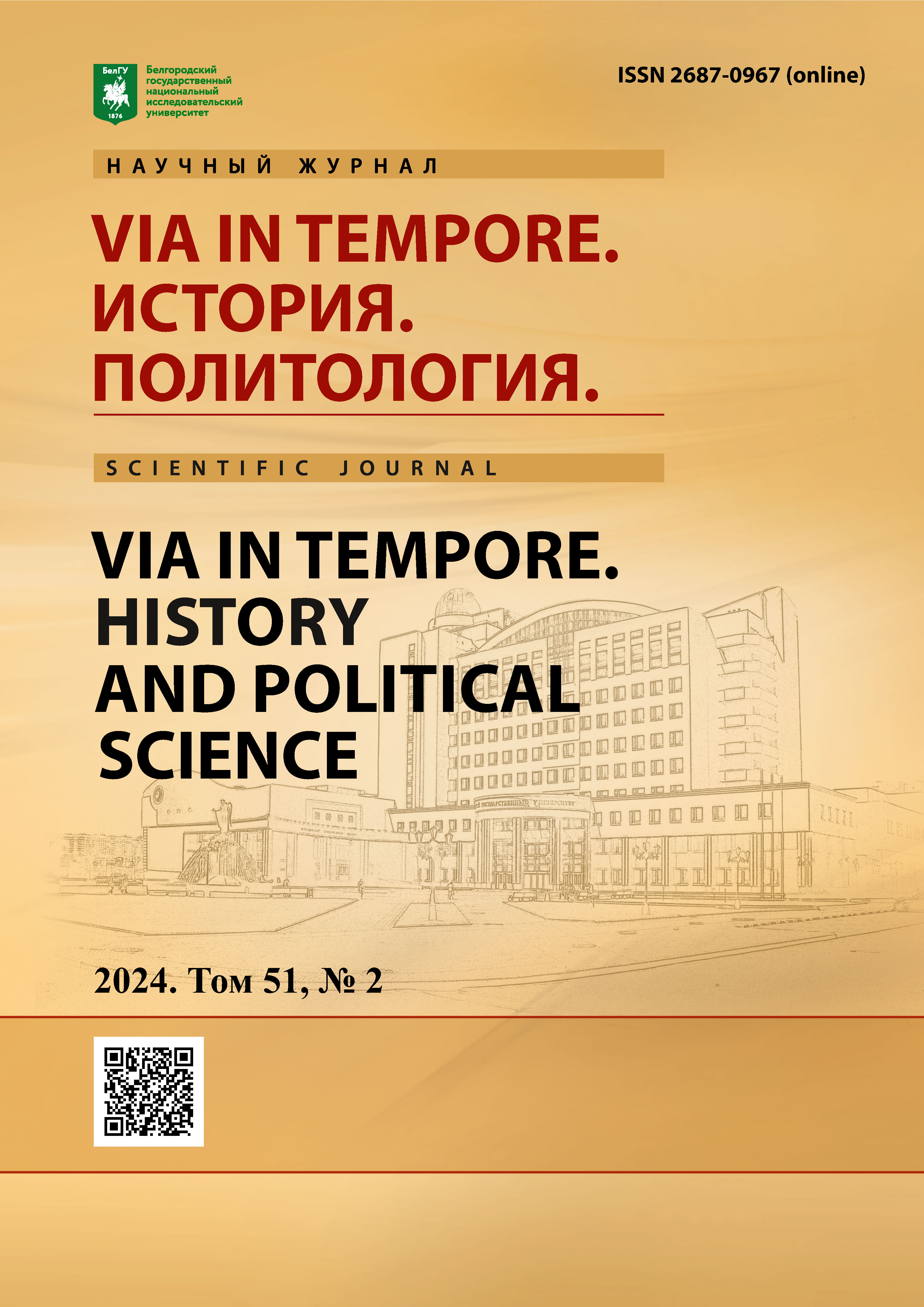Caesarea and Jerusalem: The Rivalry for Primacy of Two Palestinian Cathedrae in the Era of Late Antiquity
DOI:
https://doi.org/10.52575/2687-0967-2024-51-2-323-336Keywords:
rivalry for primacy, bishop of Jerusalem, metropolitan bishop of Caesarea, cathedra, Palestine, Caesarea Maritima, Jerusalem, Late Antiquity, Apostolic see, Holy CityAbstract
The article is about the history of the rivalry for primacy between two Palestinian cathedrae in Late Antiquity. The author notes that the topic is poorly researched and concludes that the rivalry between Jerusalem and Caesarea began in the early IV century and continued until the official declaration of Jerusalem as an autocephalous Church at the Council of Chalcedon in 451, and the bishop of Jerusalem as the patriarch. The process of the rise of the bishops of Jerusalem cannot be considered as instantaneous, took place only during the reign of one bishop of Jerusalem, but as a process that took place for almost a century and a half. During this confrontation, some things played an important role: firstly the city of Jerusalem itself which gradually became a Holy City; secondly the apostolic origin of the see of Jerusalem; thirdly the situation in the Christian Church, especially the actions of such powerful hierarchs as the Pope, the patriarchs of Antioch and Alexandria; fourthly dogmatic disputes and, finally, the personal qualities and ambitions of the bishops of the two cities. The high importance of the last bishop and the first patriarch of Jerusalem, Juvenal, reinforced by the actions of his predecessors, made it possible to put an end to the rivalry with Caesarea and rise above its bishops forever.
Funding
The work was carried out without external sources of funding.
Downloads
References
Беневич Г.И. 2015. Св. Кирилл Иерусалимский и борьба за возвышение Иерусалимской кафедры в IV в. В кн.: Научная сессия ГУАП (Санкт-Петербургский государственный университет аэрокосмического приборостроения). Сборник докладов. В 3-х частях. Санкт-Петербург, [б. и.]: 75–85.
Болотов В.В. 1913. Лекции по истории Древней Церкви. Том 3. Петроград, 340 с.
Болотов В.В. 1918. Лекции по истории Древней Церкви. Том 4. Петроград, 599 с.
Ващева И.Ю. 2009. Концепция Поздней Античности в современной исторической науке. Вестник ННГУ им. Н.И. Лобачевского, 6 (1): 220–231.
Голубцов А.П. 1894. О путешествиях древних христиан и наших старинных паломников в св. землю, Рим и Царьград. Богословский вестник, I (3): 446–462.
Захаров Г.Е. 2012. «Апостольский престол» в творениях свт. Либерия Римского и свт. Афанасия Великого. Вестник ПСТГУ. Серия 2: История. История РПЦ, 47: 62–69.
Л’Юилье, архиепископ Петр. 2005. Правила первых четырех Вселенских соборов. Пер. с фр. Москва, Срет. монастырь: Моск. духов. акад., 528 с.
Милаш, епископ Никодим. 2001. Правила православной церкви с толкованиями Никодима, епископа Далматинско-Истрийского. Пер. с серб. Москва, Отчий дом. 650 с.
Миронов А. 1999. История Антиохийской схизмы в IV в.: евстафиане, мелетиане и аполлинариане. Христианское чтение, 17: 88–113.
Селунская Н.А. 2004. Осень средневековья и поздняя античность: как антиковеды с медиевистами историю делили. Диалог со временем. Альманах интеллектуальной истории, 13: 232–246.
Ariel D.T. 2020. The Byzantine Coins. In: Jerusalem. Excavations in the Tyropoeon Valley (Givʻati Parking Lot) II, The Byzantine and Abbasid Periods. Part 1: Stratum V – The Byzantine Period (IAA Reports 66). Jerusalem: 159–182.
Bright W. 1903. The Age of the Fathers: Being Chapters in the History of the Church During the Fourth and Fifth Centuries. Longmans, Green, 543 p.
Brown. P. 1971. The World of Late Antiquity: from Marcus Aurelius to Muhammad. London, 216 p.
Cameron A., Ward-Perkins B., Whitby M. 2008. The Cambridge Ancient History: Late Antiquity: Empire and Successors, A.D. 425–600. Cambridge University Press, 1101 p.
Drijvers J. 2004. Cyril of Jerusalem: Bishop and City. Leiden-Boston, 214 p.
Dvornik F. 1958. The Idea of Apostolicity in Byzantium and the Legend of the Apostle Andrew. Cambridge, 342 p.
Hansen I.L., Wickham C. 2000. The Long Eighth Century. Brill, 388 p.
Honigmann E. 1950. Juvenal of Jerusalem. Washington, DC: Dumbarton Oaks, Trustees for Harvard University, 279 p.
Isaac B.H. 1997. The Near East Under Roman Rule: Selected Papers. Brill, 484 p.
Jacobson D.M. 2020. The Enigma of the Name Īliyā (= Aelia) for Jerusalem in Early Islam. Available at: https://www.academia.edu/38981188/The_Enigma_of_the_Name %C4%AAliy%C4%81 Aelia for Jerusalem in Early Islam (accessed 8 September 2023).
Kötter J.-M. 2022. Palestine at the Periphery of Ecclesiastical Politics? The Bishops of Jerusalem after the Council of Chalcedon. In: City of Caesar, City of God. Constantinople and Jerusalem in Late Antiquity. De Gruyter: 241–259.
Opper T. 2009. Hadrian: Machtmensch und Mäzen. Darmstadt, 256 p.
Sear D. 1987. Byzantine Coins and Their Values. London, 528 p.
Schaff Ph. 1899. The Seven Ecumenical Councils. New York, 1500 p.
Schäfer P. 2003. The Bar Kokhba war Reconsidered: New Perspectives on the Second Jewish Revolt against Rome. Mohr Siebeck, 313 p.
Trampedach K. 2022. The Making of the Holy Land in Late Antiquity. In: City of Caesar, City of God. Constantinople and Jerusalem in Late Antiquity. De Gruyter: 11–38.
Walker P. 1990. Holy City Holy Places? Christian Attitudes to Jerusalem and the Holy Land in the Fourth Century. Oxford: Clarendon Press, 438 p.
Wallace-Hadrill D.S. 1960. Eusebius of Caesarea. London, 224 p.
Wirgman A.T. 2008. The Constitutional Authority of Bishops in the Catholic Church: Illustrated by the History and Canon Law of the Undivided Church from the Apostolic Age to the Council of Chalcedon, A.D. 451. Fisher Press, 219 p.
Zlotnik Y. 2012. The Minting of Coins in Jerusalem during the Roman Period. Available at: https://www.academia.edu/9828968/ The Minting of Coins in Jerusalem during the Roman Period (accessed 14 September 2023).
Abstract views: 156
Share
Published
How to Cite
Issue
Section
Copyright (c) 2024 Via in tempore. History and political science

This work is licensed under a Creative Commons Attribution 4.0 International License.


